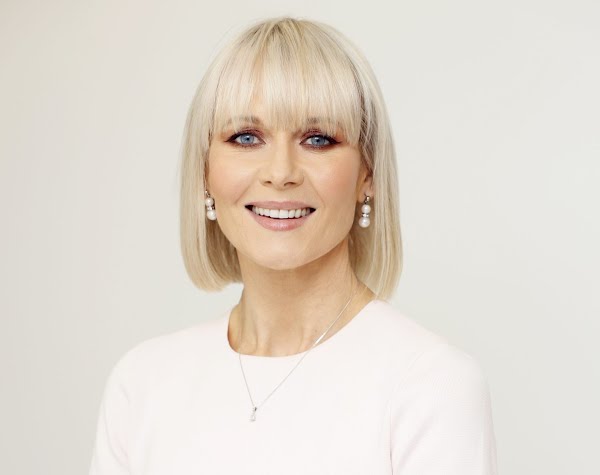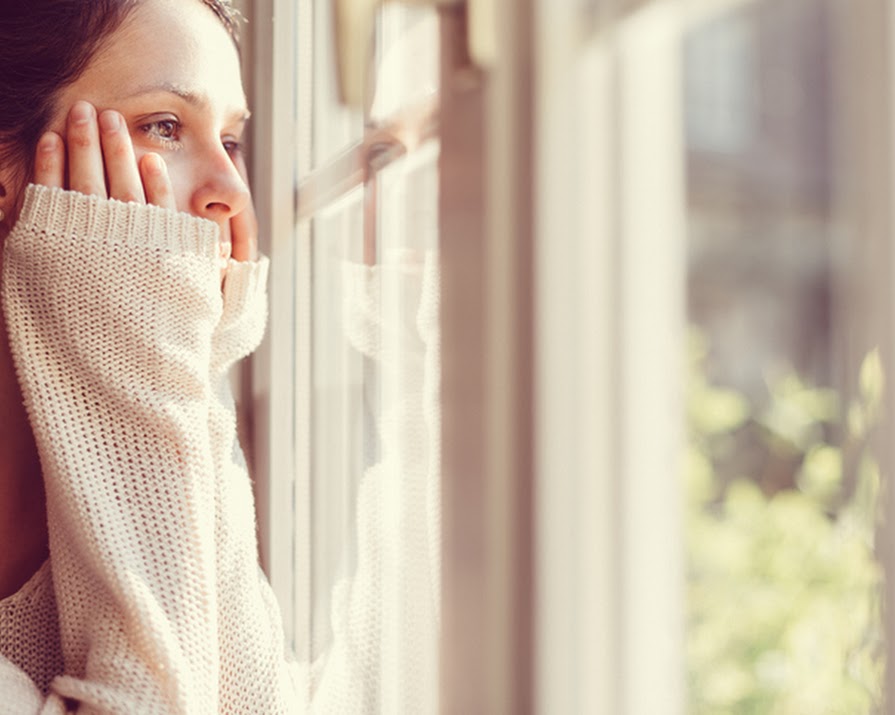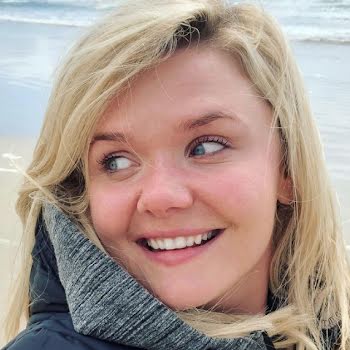
Sponsored
‘I noticed the tiniest freckle on my ankle’: A young woman opens up about her skin cancer diagnosis
Sponsored By

By IMAGE
20th Jun 2021
20th Jun 2021
Sponsored By

Everything changed for this IMAGE staff member when she was diagnosed with melanoma. Now, she’s encouraging young women to be more aware of skin safety.
I was watching TV one evening, legs up on a pouf, when I noticed the tiniest freckle on the back of my ankle. I have freckles all over my body, some darker than others, but there was something about this one that stood out. It was barely a millimetre in diameter yet almost black in colour.
I’d never seen this colour on my body before, so I consulted Dr Google and took a photo of it to monitor changes. A few days later, I showed my mum. Her diagnosis was hypochondria…
The photos of skin cancer lesions that I found online looked much larger than the tiny fleck of black on the back of my ankle, so I decided to take a watch-and-wait approach. As long as the freckle didn’t change size or shape, I assumed I had nothing to worry about.
Advertisement
A few months later, I was in the GP’s clinic with a sinus infection. As she was writing out my prescription, I remembered the freckle and sheepishly asked her to take a look. “It’s probably nothing,” I told her as I rolled up my trousers.
The doctor took out her magnifying tool and began to examine the area with a thoroughness I wasn’t expecting. “This concerns me,” she said at once, before filling out a referral form with the ‘urgent’ box ticked.
I dwelled on how foolish I had been
The ten days before my hospital appointment gave me plenty of time to dwell on how foolish I had been.
In the years prior, I had been experimenting with the digital nomad lifestyle, bringing my laptop to sunshine destinations where I could work in my bikini. I always had a tan, and as my skin became darker, the sun factors I wore became lower.
Back in Ireland, I occasionally used sun beds to top up my tan. Yes, I know, I’m an idiot… The appointment day arrived and, thankfully, the consultant dermatologist didn’t read me the riot act when I admitted I had been using sun beds.
Advertisement
I already knew something was wrong when I called them back.
He examined my body from head to toe and concluded that the freckle was most likely an ‘ugly duckling’ mole. He pencilled me in for a biopsy to err on the side of caution, but assured me that I had nothing to worry about.
I had all but forgotten about the biopsy when, a couple of weeks later, I saw a number of missed calls from the hospital. I already knew something was wrong when I called them back.
Stage one melanoma
The doctor told me the biopsy didn’t return the results he was expecting. I had Stage 1 Melanoma, he explained, and I was lucky I had caught it so early because it was about to metastasise into something more serious.
I was booked in for a wide local excision, under local anaesthetic, a week later. The operation was quick and relatively painless; the recovery was something else entirely.

I planned to go to work the next day but when I got out of bed, I fell to the ground. I wasn’t expecting the operation to limit my mobility but when I peeled back the bandage and saw how deep the wound was, I began to understand why I was hobbling from bed to bathroom.
Advertisement
I had a limp for about two weeks and I couldn’t exercise for months. It took over a year for the scar to turn from deep and purple to light and pink.
I realised how lucky I had been
It was a debilitating experience but all I could think about was how lucky I had been. What would have happened if it had metastasized to Stage 4? Imagine losing part of your foot for a tan…
Needless to say, my approach to sunscreen and UV exposure has changed dramatically. I now wear a hat and an SPF of 50, even if it’s partly cloudy. I keep the scar covered with plasters and I don’t stay in the sun for more than 40 minutes at a time.
I’d be lying if I said I didn’t miss having a natural tan, but I can’t afford to take any risks. High sun protection has become a non-negotiable part of my skincare routine, and there’s always fake tan.
It’s a terrible cliche, but I thought things like this didn’t happen to people like me. I thought my dark hair, and my dad’s darker skin, would give me some sort of natural skin protection. I thought I had youth on my side.
Yes, I’m lucky that I caught it early, and lucky that my scar is in a discreet part of my body and not on my face. But it doesn’t always turn out that way. I’ve learned the hard way that unprotected sun exposure just isn’t worth the risk. And it’s better to be pale and interesting than permanently scarred.
Advertisement
We asked a dermatologist on how to ensure you are limiting your risk of skin cancer

“With over 12,000 cases diagnosed in Ireland each year, skin cancer is Ireland’s most common cancer,” says Consultant dermatologist Prof Niki Ralph. “Fortunately, skin cancer is also one of the most preventable forms of cancer.
“About 90 per cent of nonmelanoma skin cancers and 85 per cent of melanoma cases are associated with exposure to ultraviolet radiation from the sun. It is therefore vital to use broad spectrum SPF regularly, a style of clothing to protect the skin and a hat when outdoors.
“Using self-surveillance by performing skin checks at home to monitor for changes in naevi (moles) such as change in shape, size and colour can result in early detection of a possible skin cancer. Therefore, I advise making an appointment with your GP or dermatologist if you have any concerns regarding a new or changing lesion.”
Advertisement
Stay Safe in The Sun
At La Roche-Posay, we recommend you follow sun safety precautions to protect your skin and limit your risk. Here are our top tips.
Apply sunscreen daily
Skin experts and dermatologists recommend applying SPF daily – around two finger lengths of broad-spectrum SPF for your face and around two teaspoons for the rest of your body. You will need to apply more sun protection to larger areas of exposed skin too. Sunscreen should be applied generously 30 minutes before sun exposure and should be reapplied frequently and generously every two hours to maintain protection (or more if you go swimming, sweat profusely or towel-dry your skin).
Recommended by dermatologists worldwide, La Roche-Posay Anthelios offers a wide range of sun care products, including the bestselling everyday SPF Invisible Fluid Ultra Light SPF 50+ and the Invisible Body Spray SPF30. Specially formulated for all types of sensitive skin, the water resistant, hypoallergenic range ensures a very high broad UVA/UVB protection.
Advertisement
Stay in the shade
Sun protection isn’t the only way you can protect your skin, and there are other steps you can take to prevent damage. On hot, sunny days try to seek shade as much as possible. Avoid direct sun exposure between 11am and 3pm when the sun is at its strongest.
Cover up areas prone to sunburn
Protect the skin with clothing, including a hat, long-sleeved top and sunglasses with UV protection. If wearing this type of clothing isn’t practical, at least try to wear a T-shirt or beach cover up.
Provide extra protection for babies
Ensure they are wearing a hat, loose fitting clothing (to prevent overheating) and sunglasses. It is recommended to keep babies less than six months old out of direct sunlight at all times. While older babies/toddlers (under three) should be kept out of the sun as much as possible and in particular during the hottest time of the day, 11am to 3pm.
La Roche-Posay Anthelios Suncare is recommended by dermatologists worldwide*. Formulas are suitable for daily use and all sensitive skin types. The tailor-made by skin type sunscreens are hypoallergenic and non-greasy, making them perfect for use every day. Shop the full Anthelios suncare range here.
* Based on interviews with 6023 dermatologists – IQVIA International Dermatologists Barometer 2017/18 and 2018/19 waves.
Advertisement























